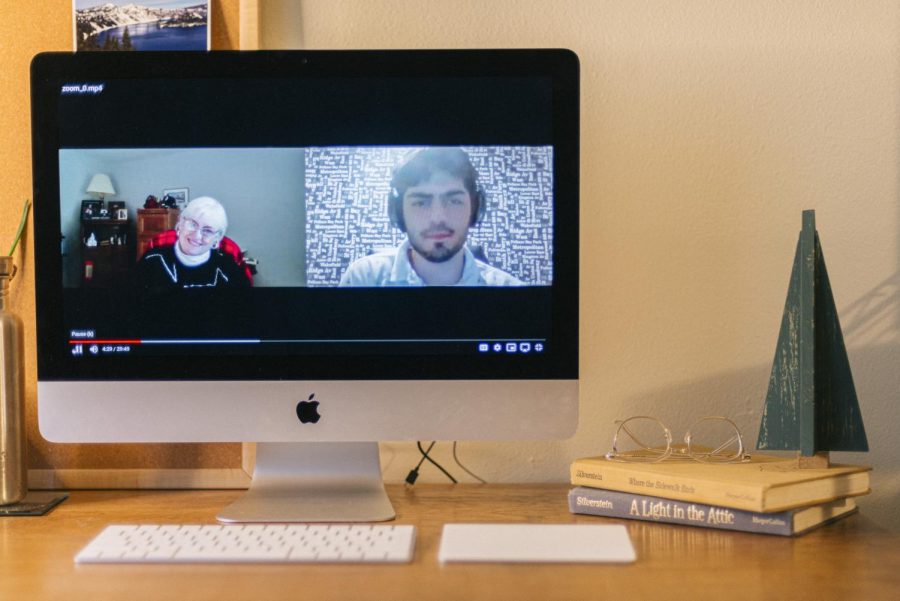Baro staff reflect on biggest stories of their time
March 1, 2021
The Daily Barometer throughout its 125 year history has produced memorable and significant stories according to former staff members, including the historic change of renaming Oregon State College to Oregon State University in 1961.
Former staff of The Barometer, Barbara Wallace Cullicott, who worked for the newspaper from 1959 to 1963, recalls the coverage of the change of the name of the university. According to Cullicott, OAC at the time only offered the ‘lower division of liberal arts,’ which is only two years, not four which would
lead to a degree.
While Cullicott was a student, the curriculum changed, so she could get a bachelor’s of arts in humanities and social sciences, but she had to take a hard science minor.
OSU has changed their name a total of 11 times. The current name change was pushed due to the desire to become a more ‘complete’ institution with the addition of new academic programs and research. The name change was adopted after former Oregon Gov. Mark Hatfield signed the legislative act into law.
“Word was [at the time] that [University of Oregon] insisted that any liberal arts majors still needed to represent the science piece of the university,” Cullicott said via email. “UO was against [the name change], and they thought one [four year] university was enough. So [UO] thought they should be the only school, but it was just a matter of time for us to ‘become’ a university as well.”
The change of the name from college to university was a major story at the time according to Cullicott.
Andrew Hinkelman, former sports writer, editor and columnist at The Barometer from 1998 to 1999, recalls the football team finally being in favor to post a winning season after nearly three decades of often underwhelming
results.
“Hopes and dreams were shattered by what was at the time, for me, the most shocking sports story I had been a part of: head coach Mike Riley, who was chiefly responsible for the optimism, was leaving to take over the San Diego Chargers; Beaver fans were devastated and depressed, for a few days,” Hinkelman said.
At that time, The Barometer had committed all of the resources it could to cover the Beavers, sending a team to travel to Reno, Nev. and then to Pullman, Wash. at Washington State University. Hinkelman said, “the sun shone down and a choir of angels sang as the Beavs landed Dennis Erickson, a two-time national championship coach, to lead the resurrection.”
Matthew LaPlante, part of The Daily Barometer’s 2001 award winning team, recalls reporting when Desmond Tutu, Nobel Peace Prize winner, came to OSU for an event called “God at 2000,” orchestrated by professor Marcus Borg.
“Tutu wasn’t just in the Pacific Northwest to attend a conference at OSU, while he was here, he would be presiding over a same-sex wedding,” LaPlante said. “This was at a time in which gay marriage was becoming a fissure in the Anglican and Episcopal church; I asked him about this in an interview, and his answer will stay with me forever. ‘I will be there,’ he said, ‘because that is where I believe Jesus would be.’”
LaPlante also recalls covering the story of two women in Corvallis, Ore. who were expecting triplet daughters in 2001. LaPlante followed the couple for nearly a year, and Scott Johnson, former editor-in-chief of The Barometer, published
the series on the front page.
The series went on to win the Society of Professional Journalists’ top national award for collegiate feature writing.
The Barometer also covered the unexpected Columbus Day storm in 1962. The Corvallis and OSU community got little to no warnings about the severity of the storm due to the lack of sufficient meteorology technology at
the time.
“The Columbus Day Storm was also quite memorable, I remember I was walking home from class when the big winds hit, I had to hold on to a quivering street sign, to not get blown off, there ended up being damage all over Corvallis and around the campus,” Cullicott said.
The storm caused damage all over Oregon, with winds gusting at over 170 miles per hour it was one of the largest natural disasters in the United States for the 20th century.















































































































